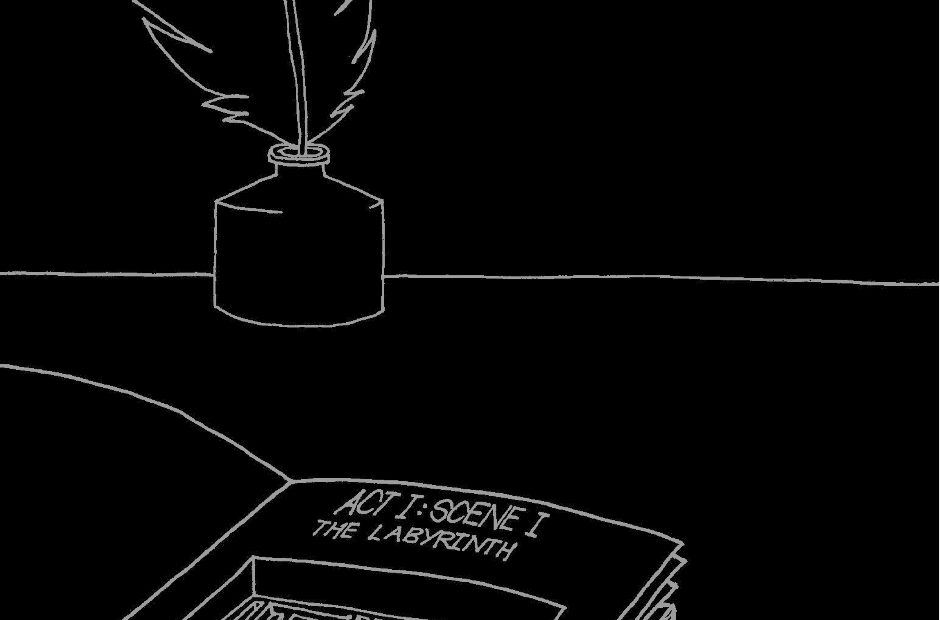Shadowplay, written by Leeds University’s Alfie Howard, is set entirely within the fictional Labyrinth of Greek myth that was said to contain the mighty and terrifying Minotaur. The audience is quickly introduced to play’s three characters (Eurymedusa, Idas, and the Labyrinth’s Steward) as well as a narrator (also played by Alfie Howard) before the drama and conflict in the play begin to escalate. As the story progresses the play’s characters are confronted with the audience staring at them before finding a copy of the play’s script, realising they are characters in the play and trying to rebel against the play itself.
As the play takes a nosedive down into a rabbit hole of absurdism, philosophy and surrealism, it hits a wonderful stride. The chaos and the confusion of events seem to balance and complement each other as the ideas the play attempt to struggle with are shown to be as unclear and disordered as the play itself. The progression of this comes to a rapid and chaotic conclusion that maintains the tone of the play nicely whilst keeping the audience bewildered and amused. However, this all seems to come at the expense of a slow start.
The play’s beginning is much more character-focused, letting the audience spend time with, and get to know, the characters before they are plunged headfirst into confusion and existential panic. Whilst this works for many plays, the undeniable fact is Shadowplay’s characters are not the play’s most interesting aspects. Without the spark of life, they seem to take on when they become self-aware, the characters themselves come across as two dimensional and wooden in the play’s opening. That’s not to say the play’s beginning is boring, but rather that it lacks the absurd, existential quandaries that make the play unique. An argument could be made that there’s something quite poetic about two-dimensional characters that become interesting and compelling as they gain self-awareness; however, combining this with a more character-driven opening leaves the audience with a much weaker first impression of the play than last.
Despite this slow start, the second two-thirds of the play shine. Allusions towards great works of philosophy, poetry, and fiction populate the piece, including a retelling of Plato’s ‘Cave’ with added murder. As these allusions build they help serve the overall vision of the play; nodding to Plato and Descartes to frame the philosophy of the production and making the audience feel like the “peanut-crunching crowd” from Sylvia Plath’s poetry as they are named “secondary antagonists” by the play’s characters.
The play peaks during a climactic and nonsensical monologue about a giant red tapeworm in which the play’s characters attempt to escape from the theatre itself, rattling and thumping on the locked doors the audience used to enter as they try to escape from the bondage of the life that’s been laid down before them. At this moment the play’s characters most closely resemble us, the play’s audience and antagonist, as human beings questioning their place in the universe.
Shadowplay is an existential rollercoaster that gets off to a shaky start, dazzles its audience with existential dread, and concludes abruptly without tying off all the loose ends. In this way, the play too is made to resemble its audience members who go through life in much the same manner.
By Matthew Jeffery
Image courtesy of Stage@Leeds, Shadowplay

